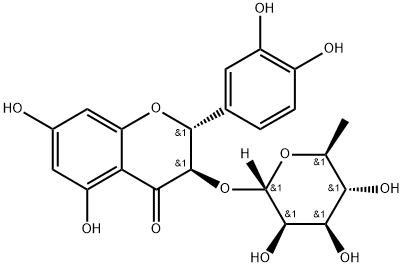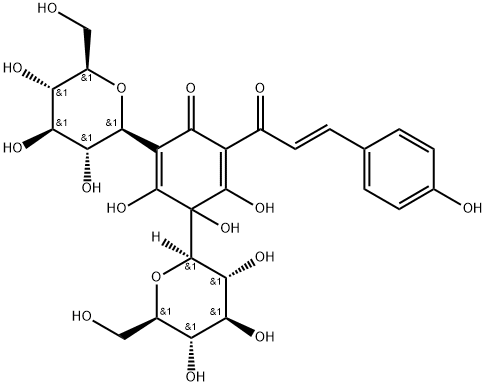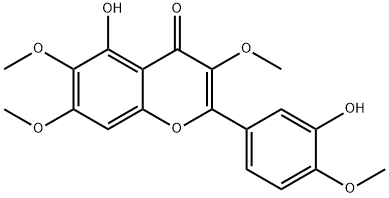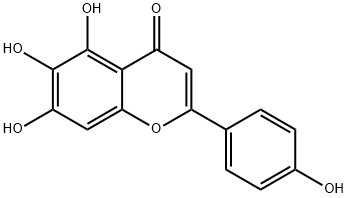Astilbin from Engelhardtia roxburghiana , Analysis of standard products, ≥98% , 29838-67-3
Synonym(s):
Astilbin;Dihydroquercetin 3-rhamnoside;Taxifolin 3-rhamnoside
CAS NO.:29838-67-3
Empirical Formula: C21H22O11
Molecular Weight: 450.4
MDL number: MFCD20274680
EINECS: 694-695-3
| Pack Size | Price | Stock | Quantity |
| 20MG | RMB369.60 | In Stock |
|
| others | Enquire |
PRODUCT Properties
| Melting point: | 180 °C (decomp) |
| Boiling point: | 801.1±65.0 °C(Predicted) |
| Density | 1.74 |
| storage temp. | Sealed in dry,2-8°C |
| solubility | H2O: soluble1mg/mL, clear, colorless |
| pka | 7.34±0.60(Predicted) |
| form | A crystalline solid |
| color | White to off-white |
| Water Solubility | H2O: 1mg/mL, clear, colorless |
| InChIKey | ZROGCCBNZBKLEL-MQGABXIONA-N |
| SMILES | O([C@]1([H])O[C@@H](C)[C@H](O)[C@@H](O)[C@H]1O)[C@H]1C(C2=C(C=C(O)C=C2O[C@@H]1C1C=CC(O)=C(O)C=1)O)=O |&1:1,4,6,8,10,12,22,r| |
Description and Uses
Astilbin is a flavonoid that has been found in S. glabra and has diverse biological activities. It inhibits cisplatin-induced increases in apoptosis and accumulation of reactive oxygen species (ROS) in HEK293 cells when used at a concentration of 200 μM. Astilbin (50 mg/kg) increases renal glutathione (GSH) levels and superoxide dismutase (SOD) and catalase activity and reduces serum creatinine and blood urea nitrogen (BUN) levels, renal IL-1β, IL-6, and TNF-α levels, apoptosis in kidney tissue, and kidney injury in a mouse model of cisplatin-induced nephrotoxicity. It reduces loss of dopaminergic neurons in the substantia nigra and increases striatal GSH levels and SOD activity in a mouse model of MPTP-induced Parkinson''s disease when administered at a dose of 50 mg/kg per day. Astilbin also reduces descent time in a pole test and increases traction test score in a mouse model of Parkinson''s disease, indicating reduced motor deficits. It reduces cell viability of MDA-MB-231 and MCF-7 cells (IC50s = 167.9 and 191.6 μM, respectively), as well as inhibits migration and increases apoptosis when used at concentrations of 50 and 200 μM. Astilbin (20 mg/kg every other day for 14 days) reduces tumor growth in an MCF-7 mouse xenograft model.
Astilbin displays anti-depressant activity involving monoaminergic neurotransmitters an the BDNF signal pathway. Anti-oxidant.






